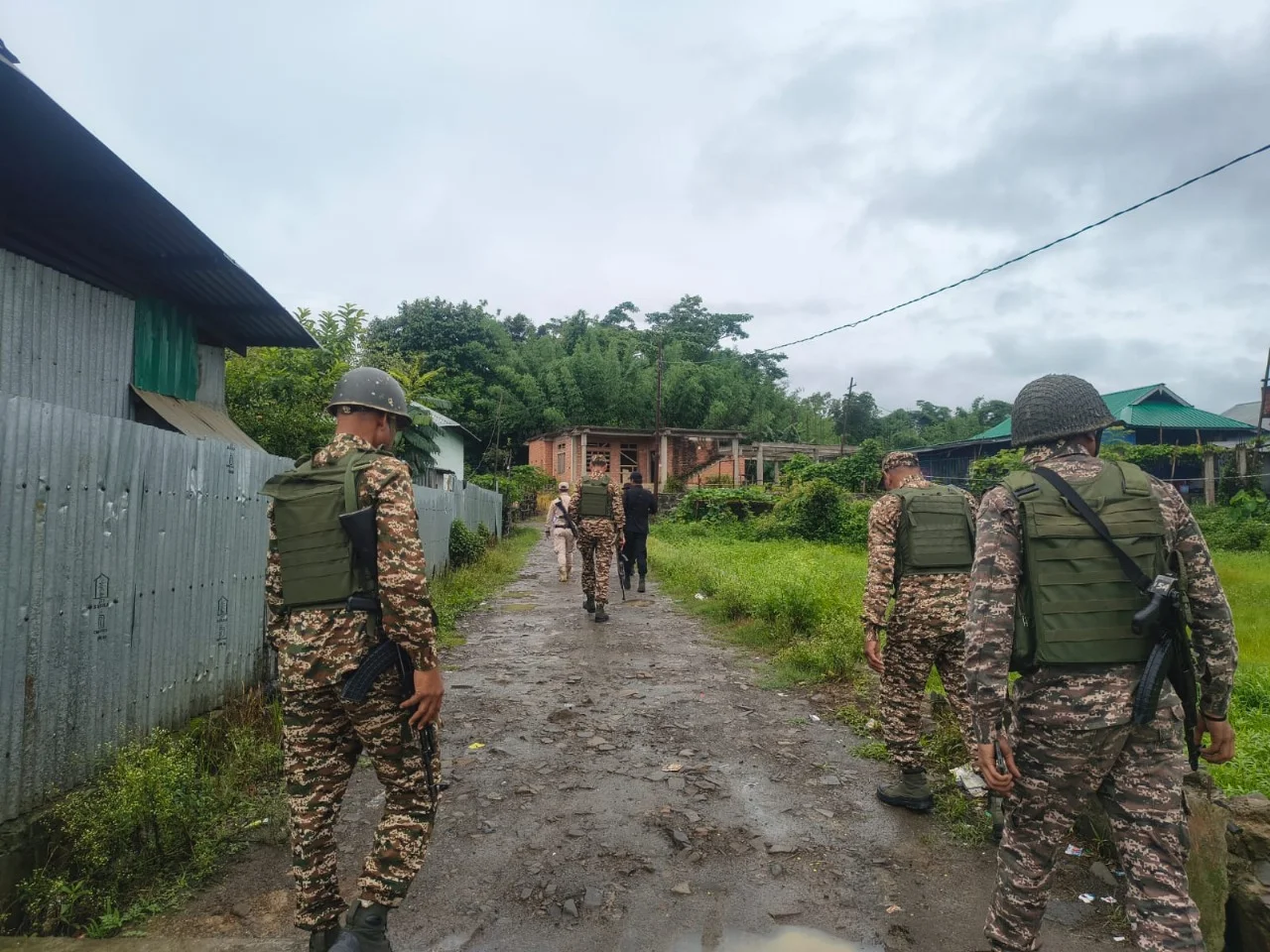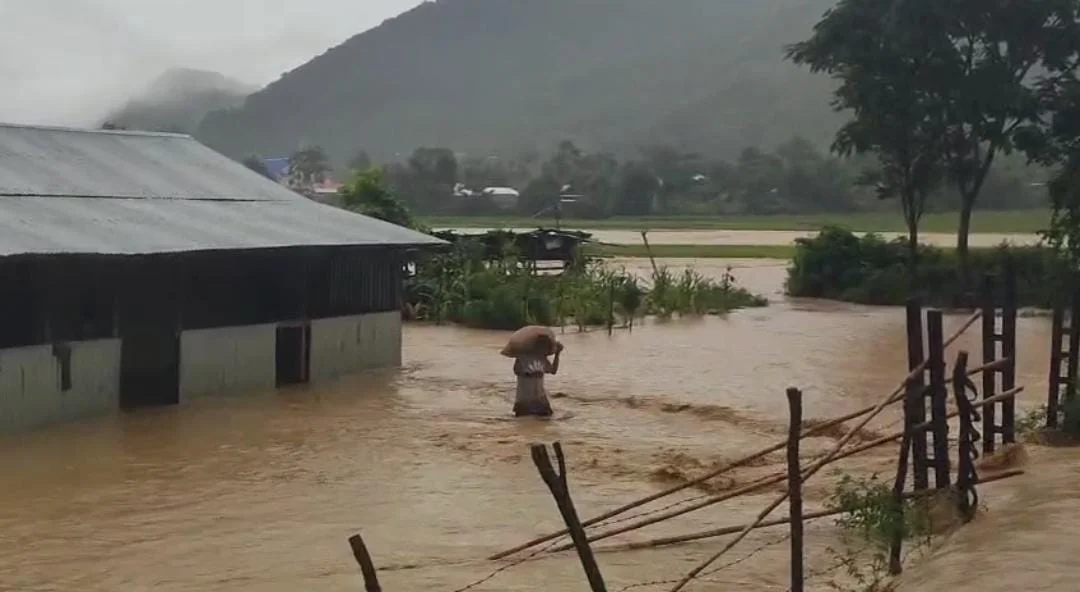The serene landscape of Molhoi village in Manipur’s Kuki-dominated Churachandpur district was shattered on Monday evening by a dramatic standoff, underscoring the deep-seated Manipur Tension that continues to plague the region. What began as a routine security operation to apprehend a suspected militant quickly escalated into a tense confrontation between security forces and a determined local populace. This incident is a stark reminder of the volatile undercurrents defining the current Manipur Tension, where public sentiment and law enforcement often find themselves at odds.
The Incident Unfolds: A Spark Ignites Manipur Tension
Sources reveal that security personnel initiated an operation aiming to arrest an individual believed to be involved in militant activities. However, as news of the unfolding event spread like wildfire through the closely-knit community, residents rapidly mobilized. A large, agitated mob began to gather at the scene, effectively encircling the security forces and obstructing their efforts to carry out the arrest. This immediate community response highlights the complex dynamics that fuel Manipur Tension, where allegiances and distrust run deep.
Community Response: Public Resistance Amidst Manipur Tension
The spontaneous assembly of villagers was not merely a passive blockade; it was an active demonstration of collective resistance. As more individuals joined the throng, their resolve hardened. Protesters took to the streets, setting tyres ablaze to create impromptu roadblocks and further impede the movement of the security forces. The visual of burning tyres against the night sky became a powerful symbol of the community’s refusal to cooperate, intensifying the existing Manipur Tension. This act of defiance underscores the deep-seated grievances and anxieties prevalent in areas experiencing prolonged Manipur Tension, often stemming from historical conflicts and perceived injustices.
The collective action of the mob was sustained for nearly six agonizing hours. This prolonged standoff speaks volumes about the determination of the local population and the emotional charge behind their actions. Such events are not isolated; they are frequently symptomatic of the broader Manipur Tension, where various factions and communities grapple with issues of governance, security, and identity. The community’s unified front suggested a profound sense of protectiveness, possibly rooted in local sentiments or mistrust towards external forces. This level of public mobilization further complicates efforts to de-escalate Manipur Tension, requiring nuanced and sensitive approaches from authorities.
Security Forces’ Withdrawal: A Temporary De-escalation of Manipur Tension
Ultimately, facing an overwhelming and resolute crowd, the security forces made the strategic decision to withdraw from Molhoi village. Around 1 AM, after hours of fruitless negotiation and under the immense pressure of the growing mob, they retreated without achieving their objective of making an arrest. While this withdrawal brought a temporary end to the immediate confrontation, it also signified a setback for law enforcement in addressing the core issues contributing to Manipur Tension. The incident’s resolution, or lack thereof, might embolden some elements within the community or be perceived as a victory for civil resistance, potentially affecting future attempts to manage Manipur Tension.
The decision to withdraw, though pragmatic, could have broader implications for the maintenance of law and order in areas perennially affected by Manipur Tension. It highlights the challenges faced by authorities when dealing with situations where public sentiment runs high and community solidarity overrides official directives. The incident serves as a critical case study in the complexities of managing insurgent activities and maintaining peace in regions characterized by chronic Manipur Tension.
Broader Context: Understanding the Roots of Manipur Tension
The incident in Churachandpur is not an anomaly but rather a symptom of the intricate and often fraught socio-political landscape of Manipur. The state has a long history of ethnic conflicts, insurgency, and socio-economic disparities, all of which contribute to persistent Manipur Tension. Different communities, including the Kuki, Naga, and Meitei, often find themselves at odds over land, resources, and political representation. The presence of various armed groups further exacerbates the situation, making the maintenance of peace and order a continuous challenge.
The Kuki-dominated areas, in particular, have experienced significant unrest, stemming from demands for greater autonomy and protection of their ancestral lands. The actions of the mob in Molhoi village can be seen through this lens—a spontaneous outpouring of collective sentiment driven by a complex mix of fear, solidarity, and historical grievances. Understanding these underlying factors is crucial for anyone seeking to comprehend the depth and persistence of Manipur Tension.
Moreover, the interplay between state authority and local populace is delicate. Incidents like the one in Churachandpur underscore the need for sensitive and community-centric approaches to conflict resolution. Heavy-handed tactics often backfire, leading to further alienation and escalating Manipur Tension rather than de-escalating it. The incident serves as a grim reminder of the need for sustained dialogue and confidence-building measures to bridge the trust deficit that so often fuels Manipur Tension.
Implications and Future Outlook for Manipur Tension
The failed arrest attempt in Molhoi village carries several implications for the future of peace and stability in Manipur. Firstly, it highlights the operational difficulties faced by security forces when confronted with organized public resistance. This could necessitate a re-evaluation of strategies for law enforcement in such sensitive areas. Secondly, it reinforces the perception among some segments of the population that collective action can indeed influence the outcome of state actions. This might inadvertently encourage similar protests in the future, further complicating efforts to address Manipur Tension.
The incident also brings into sharper focus the urgent need for a comprehensive approach to address the root causes of Manipur Tension. This includes, but is not limited to, resolving ethnic disputes, fostering inclusive governance, and promoting socio-economic development across all communities. Without addressing these fundamental issues, isolated incidents like the one in Churachandpur will continue to flare up, perpetually keeping the state in a state of heightened Manipur Tension. The path to lasting peace in Manipur is undoubtedly challenging, requiring sustained commitment from all stakeholders—government, civil society, and local communities alike.
Conclusion: The Unresolved Challenge of Manipur Tension
The standoff in Molhoi village, culminating in the withdrawal of security forces, is more than just a news item; it is a vivid illustration of the complex and deeply entrenched Manipur Tension. It underscores the challenges faced by authorities in maintaining peace while navigating the delicate balance of community sentiments, historical grievances, and the imperative of law enforcement. As Manipur continues to navigate its intricate path towards stability, incidents such as this serve as crucial reminders that true resolution lies not just in containing immediate flare-ups but in addressing the underlying causes that fuel the ever-present Manipur Tension. The road ahead remains arduous, demanding patience, understanding, and a concerted effort from all involved to usher in an era of genuine peace and harmony, free from the shadow of Manipur Tension.
Discover more from RastriyaSamachar24x7
Subscribe to get the latest posts sent to your email.




